Presentation
Water - Earth's Blood
Water is the Blood of Earth. If you draw the analogy between water and blood, the Earth and your own body, you can quickly understand a lot about the water cycle.
You can see how the springs, creeks, and rivers mirror our own veins. But it’s not just the water in and on the ground but also in the air, the atmospheric rivers of water vapor that function as the arteries, with the forests as the lungs. Water moves through the Earth’s circulatory system, bringing life to land. Much like our own body, when this system is disrupted, damage and loss is inevitable. When the water cycle is fully functioning we have a healthy environment. This is the Full Water Cycle.
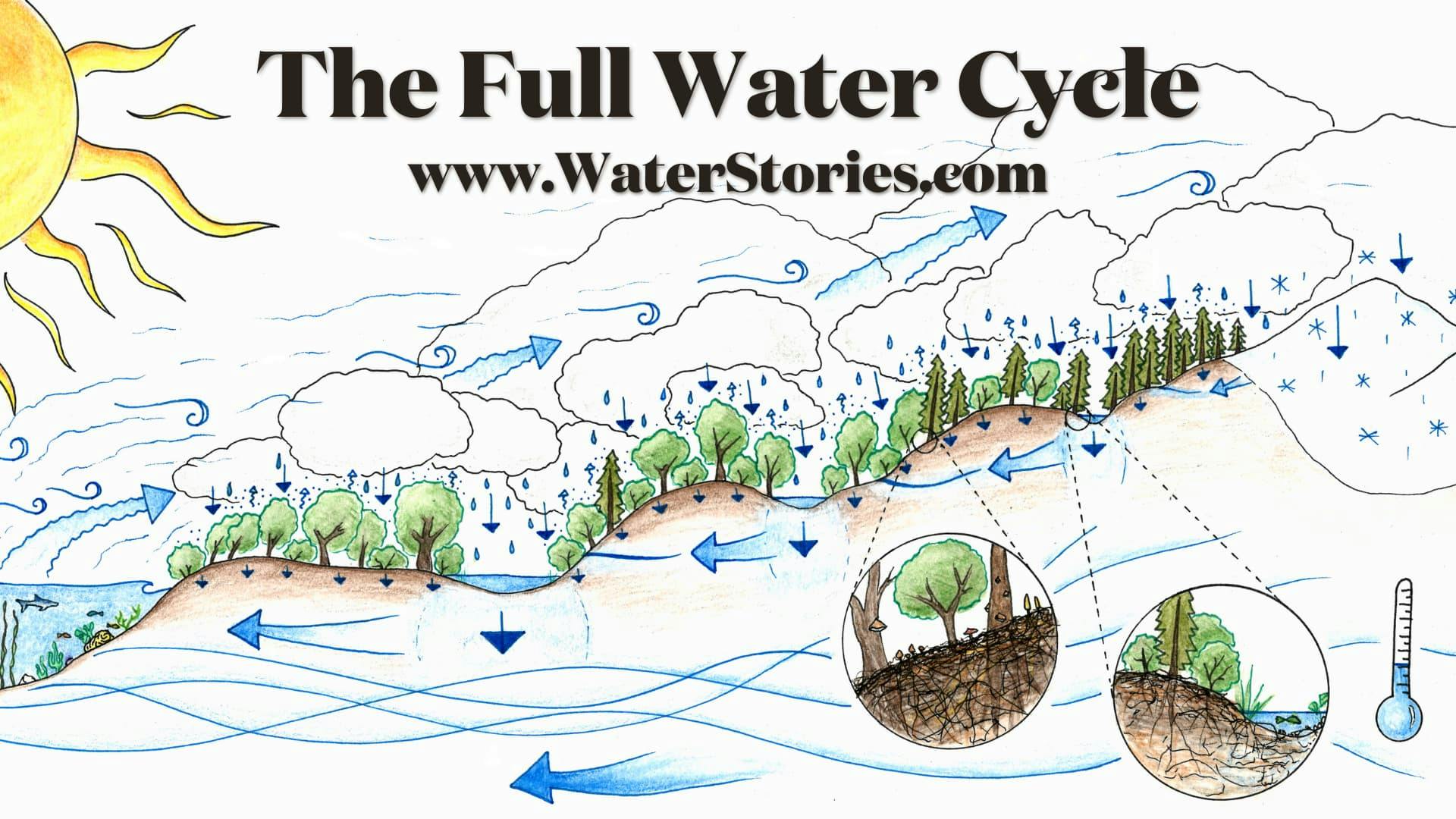
If we look at some of these veins of the Earth, we quickly see how catastrophic recent human impact has been. River systems that used to flow year round now only flow in the rainy season. The Fertile Crescent, the birthplace of agriculture, is now a desert. Without the condensation nuclei the rains have been lost, and humid deserts created. This is the Watershed Death Spiral. The most concerning part is that we’re getting better at it, we’re doing it bigger, better, and faster than ever before.
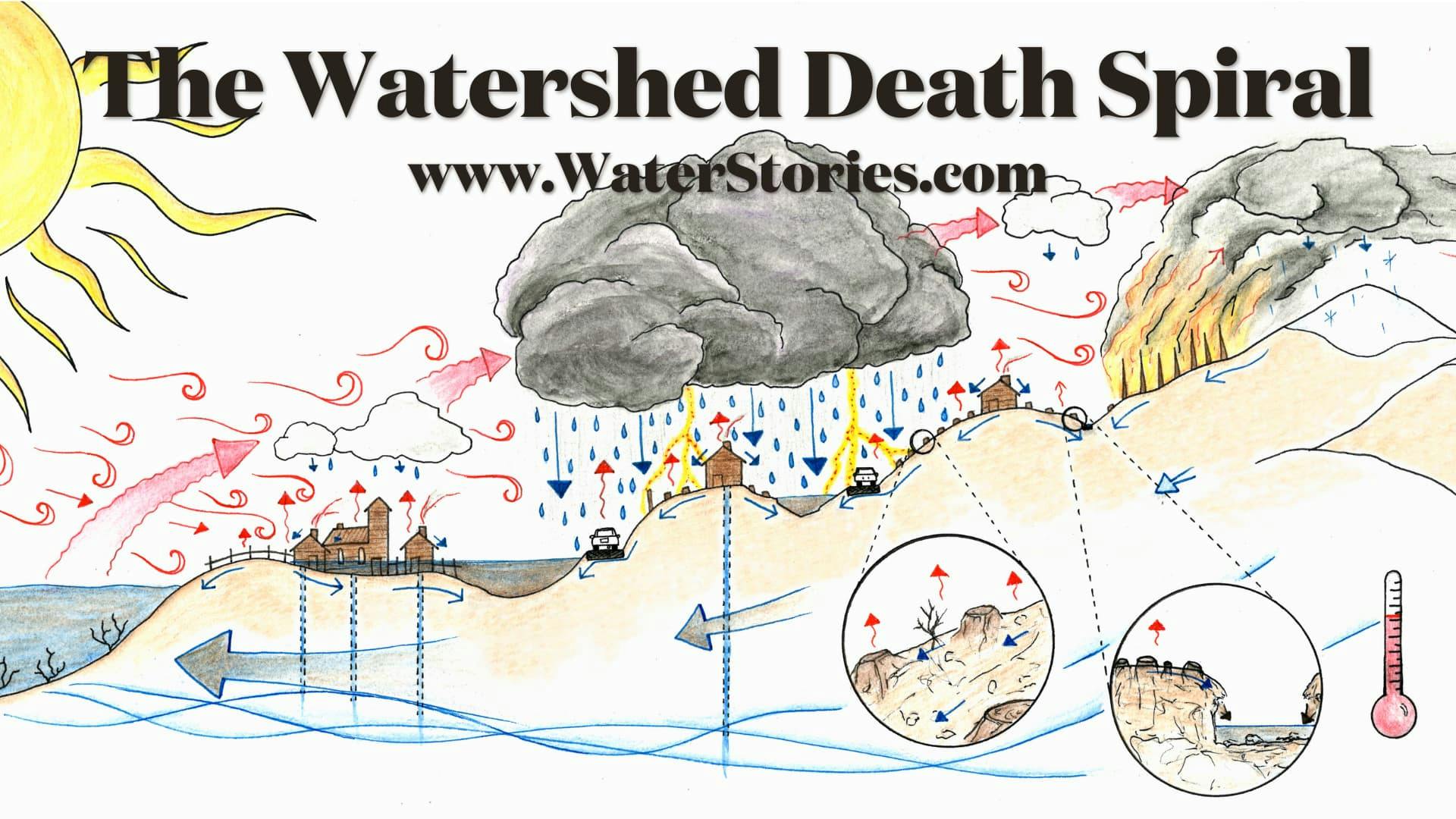
The Old Water Paradigm
If we look at some of these veins of the Earth, we quickly see how catastrophic recent human impact has been. River systems that used to flow year round now only flow in the rainy season. The Fertile Crescent, the birthplace of agriculture, is now a desert. Without the condensation nuclei the rains have been lost, and humid deserts created. This is the Watershed Death Spiral. The most concerning part is that we’re getting better at it, we’re doing it bigger, better, and faster than ever before.
As civilization arose, with poor sanitation and high concentrations, disease became a greater concern. Open water often meant disease, so the landscapes were altered to drain all of the water away. Waterways were dredged for transportation and with the then lower levels the banks were levied. The floodplains were developed making most of the world’s arable soils and cities.
These actions have hardened the landscape and disconnected waters from their floodplains. They have forced the flow to happen all at once, leading to massive flooding. Then because the water wasn’t able to infiltrate into the land, the flood is then followed by massive drought and fire. There are tremendous costs and consequences associated with these actions. We are now seeing these results first hand with catastrophic flood, drought, and fire all around the world leading to famine, refugees, and war.
How extensive has this change been? Human activity has desertified ⅓ of Earth’s land in the past 10,000 years. What have been the consequences? Single trees have within their lifetime witnessed whole continents go from drinkable water everywhere, to entire watersheds that aren’t even fishable or swimmable. They’ve seen stewardship of the land by humans go from a relationship of symbiosis to one of extraction, from creation to destruction. And that’s one thing for the humans, who can then fight over the little remaining clean water, but it’s another for the fish. They don’t have an option and end up living (or dying) with the toxicity humans created.
Water Flow Over Time
Hydrograph
Comparing the vegetated landscape with the concreted one, the issues and results quickly become clear
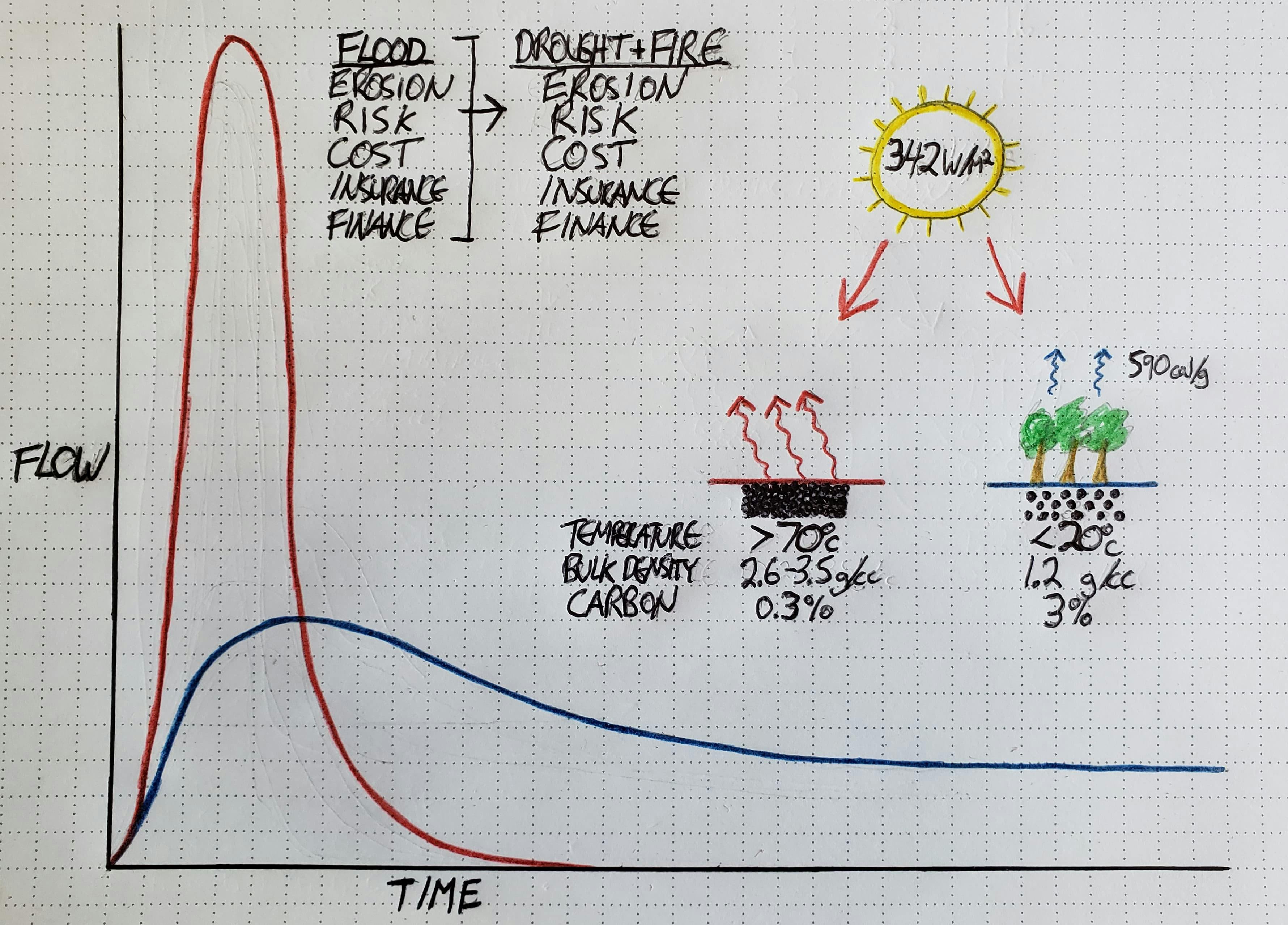
The Vegetated Landscape
In the vegetated landscape the rain quickly infiltrates into the loose and cool soil. The land remains hydrated long after the last rain. Plants access the groundwater, continuing to cool the air 590 calories per gram of water transpired. This results in stable temperatures and a balanced climate.
The Concrete Landscape
In the concrete landscape the water flow happens all at once, resulting in flooding and then the land quickly goes dry. There is only a short window for photosynthesis to occur after the last rains. This means drastically less photosynthetic cooling. The hardened bare earth absorbs and re-radiates heat from the sun. Both these impacts result in temperature rise and extreme climate.
By design of the concrete landscape we have flooding, which comes with heavy costs of erosion, risk, loss, and necessitates additional insurance and finance charges if you can’t afford all of those costs outright. But by nature of creating the flood, this is also creating the drought and eventual fires, with their own set of costs, risk, and loss. It’s creating a situation that isn’t tenable for anyone except the most wealthy…
Colonization
You can see how we got here in a single image of Mannahatta (New York City) under Indigenous vs Colonial stewardship. In the indigenous world view everything is sacred and has purpose, each part of an interconnected whole. In the colonial world view everything is a resource with energy to exploit. The value of these resources is exported elsewhere, impoverishing the local land but enriching the oligarchs.
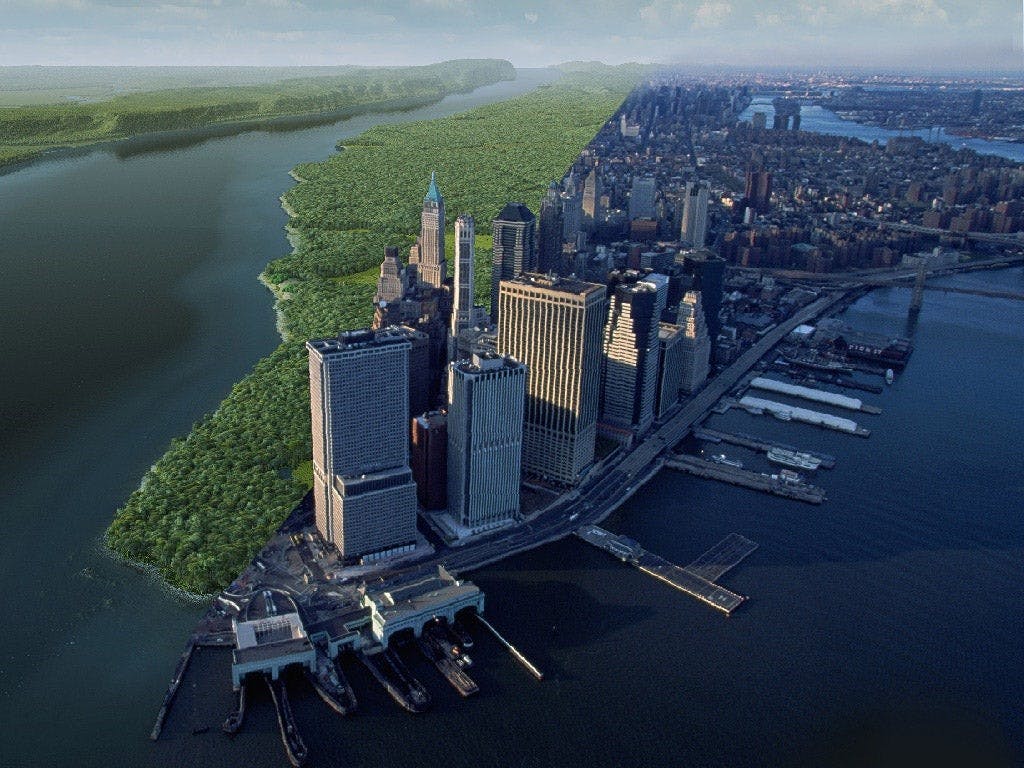
We see this actively happening in the Amazon in the present day. 50 - 80% of the rainfall received in the Amazon is from the hygroscopic microorganisms produced by trees. If the forests are cleared the amount of rain they receive will reduce by 50 - 80%. And not just for the Amazon basin, the forest acts as the biotic pump pulling water through the rest of the continent. If the forests disappear, so will the rainfall in the southern parts of the continent. Instead of a cooling system drawing in humidity from the coast, we then have a heating systems creating high pressure heat domes preventing the inflow of coastal humidity. The storm pressures build, resulting in more catastrophic weather events in other areas.
The New Water Paradigm
What we need now is a New Water Paradigm. We need to move from drainage to retention, exploitation to co-creation. This begins by changing our relationship with water and nature to one of love and respect - understanding that water is sacred, and is a common good for all life on this planet. By holding water in the ground, Decentralized Water Retention Landscapes, the vegetation will return and along with it transpiration and cooling. We need to terrace and revegetate the unused or less used lands, in order to infiltrate more water into the earth. We need to find ways wherever and whenever possible to start offsetting all of the hard surfaces and drainage our ancestors have created.
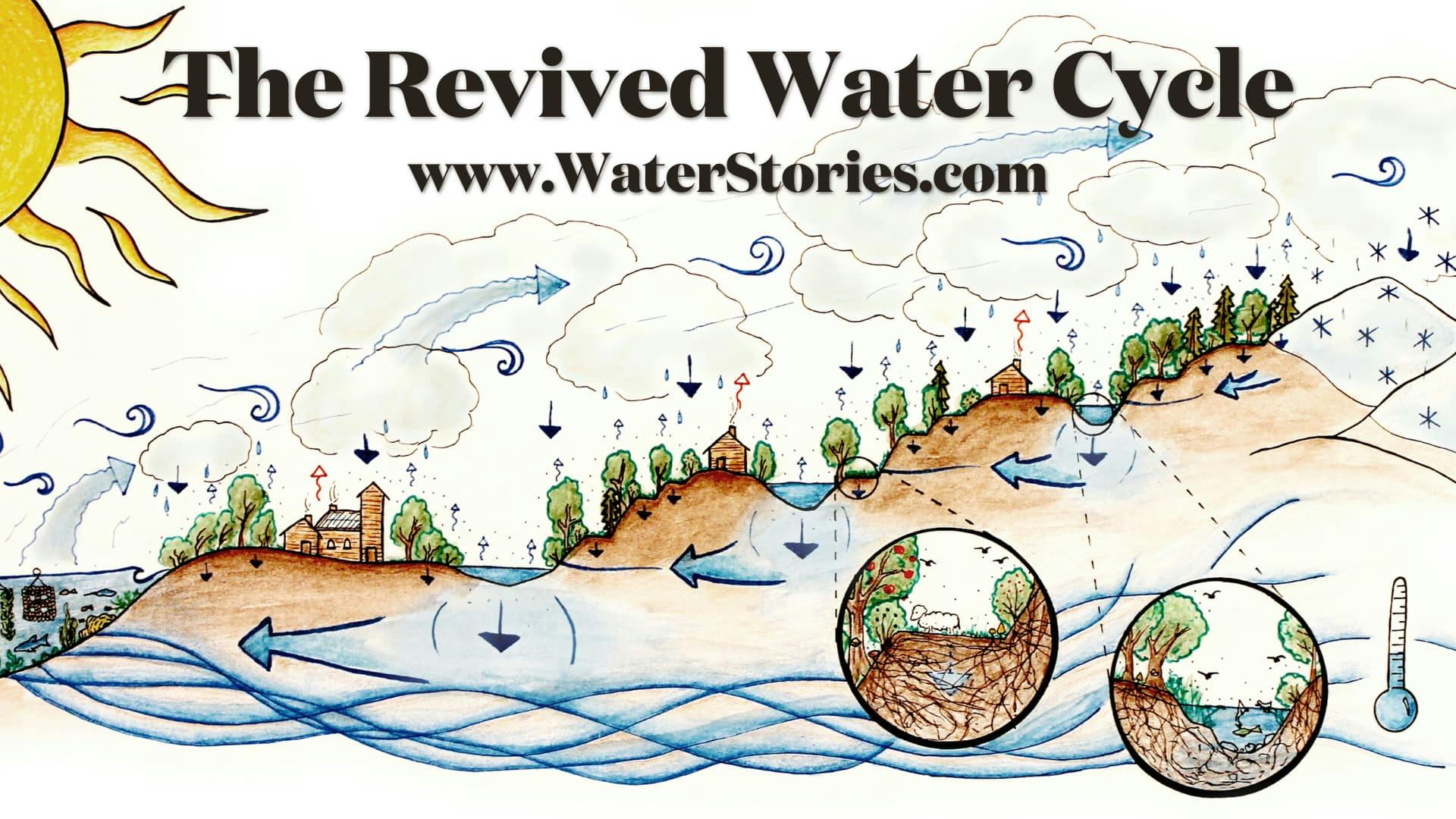
Right now the conversation about environmental footprint is all about reducing our environmental footprint. I want to have the biggest possible environmental footprint, because I understand that our footprint can be negative, or it can be positive. If we are only focused on having a less negative footprint, we will never have a positive one. So we are using the tools and resources available to us today in order to create a better tomorrow. When done well these natural systems last for generations, even till the next ice age.
How do I know this is possible? Because I have seen it first hand from my mentors and in my own projects. I am eternally grateful to Sepp Holzer, who rewired my brain and showed me what is possible when humans partner with nature, instead of fighting her. He has led people to create paradise from desert. His farm, the Krameterhof, (now run by his son Josef) is the most incredible example of human potential in partnership with nature that I have ever witnessed. On a barren mountainside farm he created paradise, not just for himself but for all of his co-living beings as well.
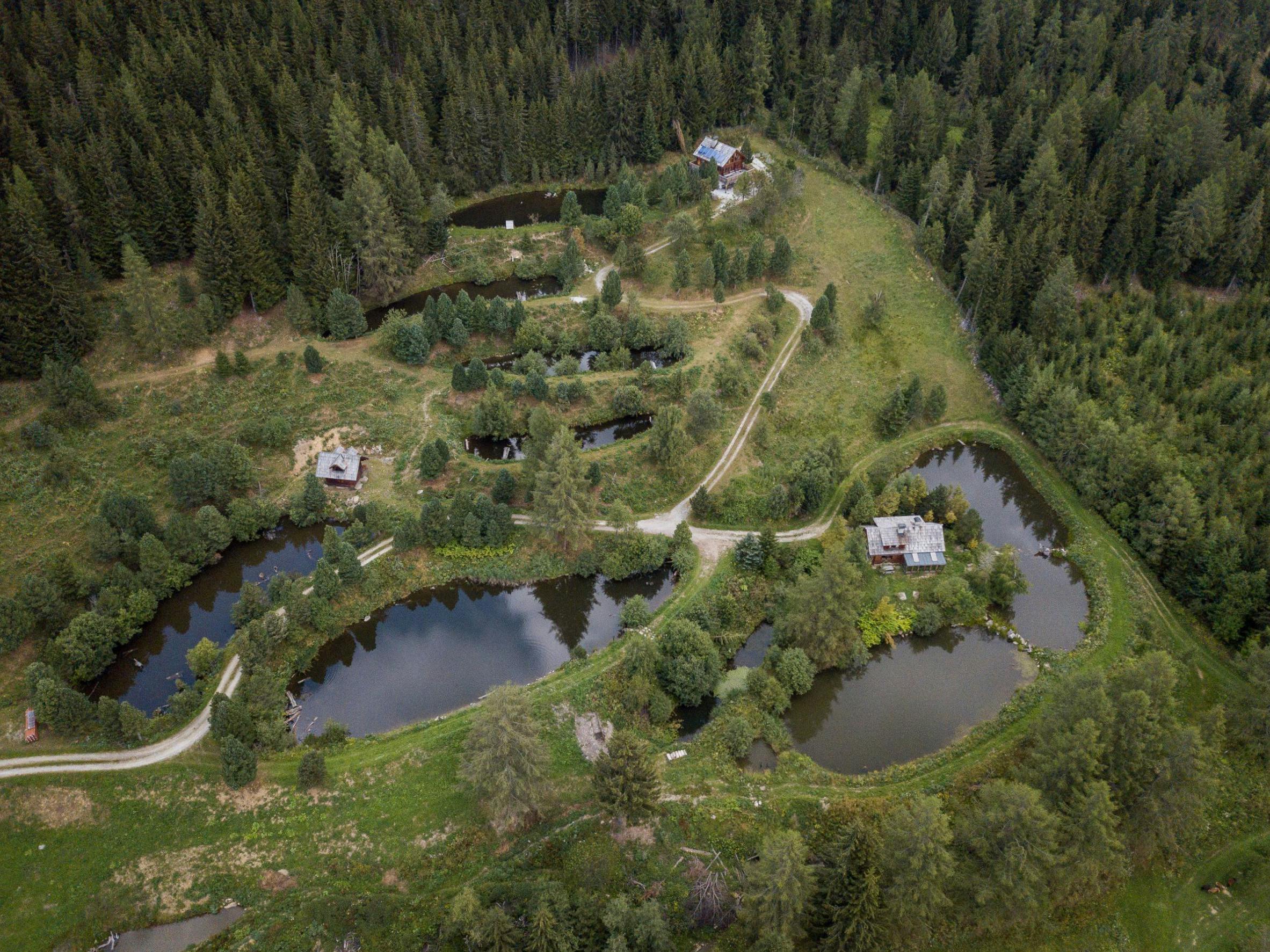
Then Rajendra Singh showed me what is possible through community action. Together we truly can quickly turn things around. The movement of Community Driven Decentralized Water Retention that he started has brought water back to 250,000 wells, impacting more than a 1 million people - reversing migration. Their work has Revived 7 Rivers and reduced the local temperature 2 degrees.
One of their projects that I experienced was a community that had run out of water. They drilled 27 borehole wells, all of which were dry. Then for the same cost they created a water retention feature to capture and store the seasonal rains. In 1 year that community went from 9 hectares of agriculture to 650 hectares. Their increase in agricultural productivity paid for the cost of the dam 4 times over, the very first year. And that work will continue to pay for itself year after year, for generations. Repairing the water cycle leads to an improvement in the quality of life for both human and non-human life on this planet. It has cascading ripple effects leading to peace and prosperity.
We the people need to reclaim stewardship of our waters and lands. We need to work together to overcome the powerful forces working towards privatization and centralization.
Nature is a force with endless momentum. When we learn how to work with her, we are partnering with a perpetual motion machine that from that point forward can serve the best interests of ourselves, our children, our communities, and the living world on Planet Earth.
What do you think? Are you ready to become part of this movement?